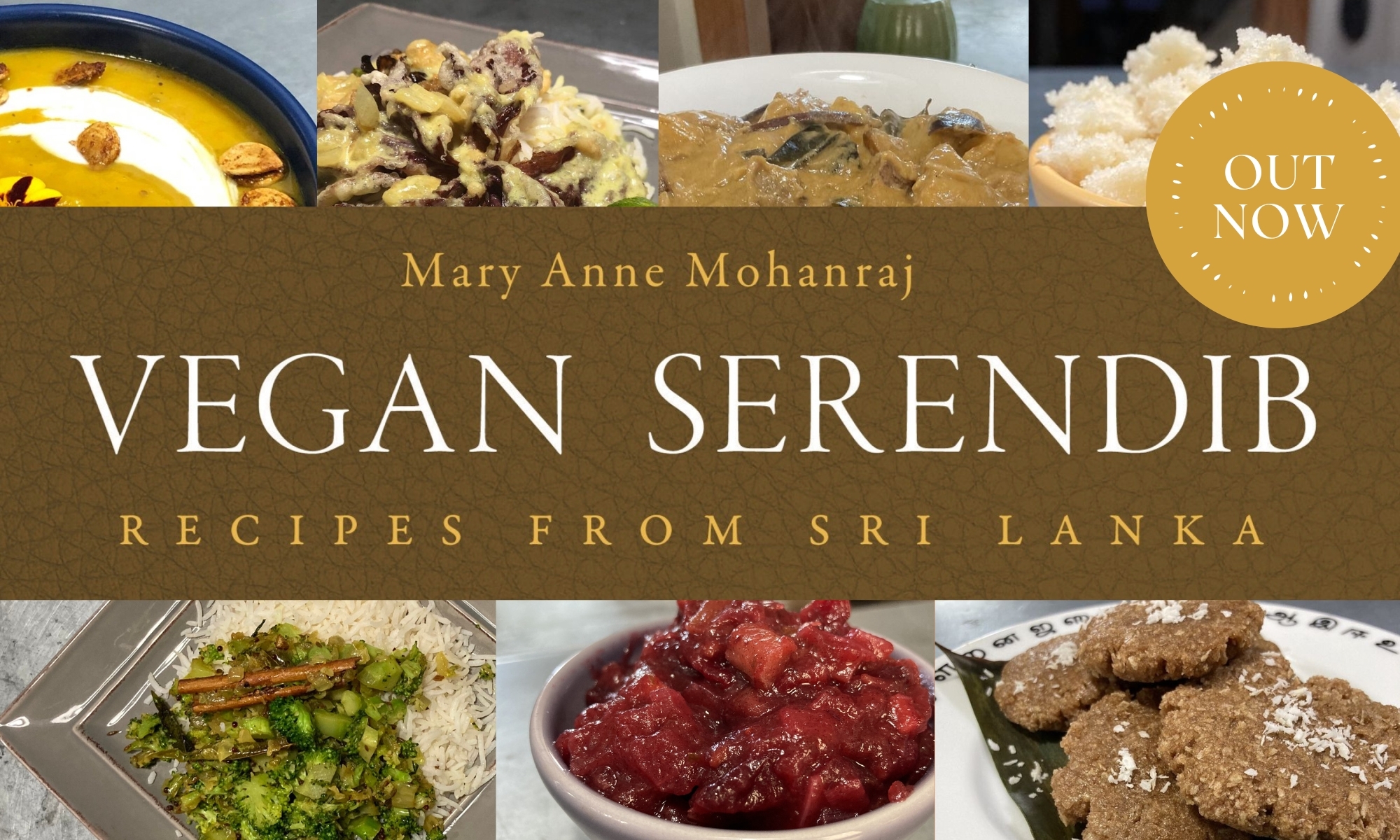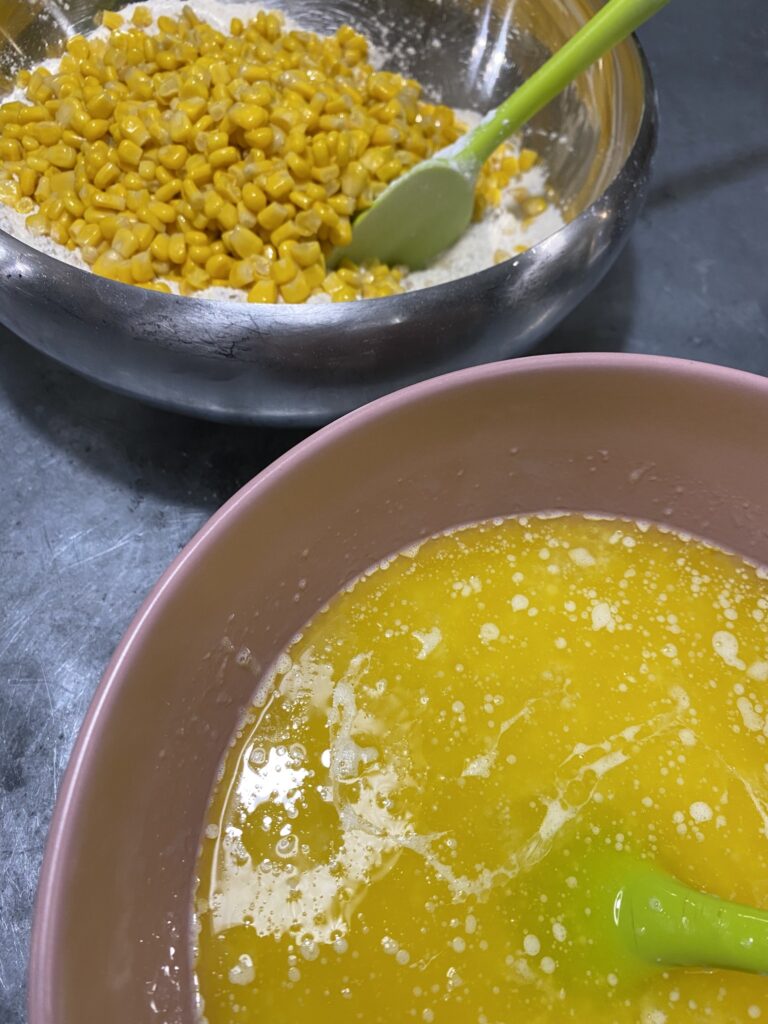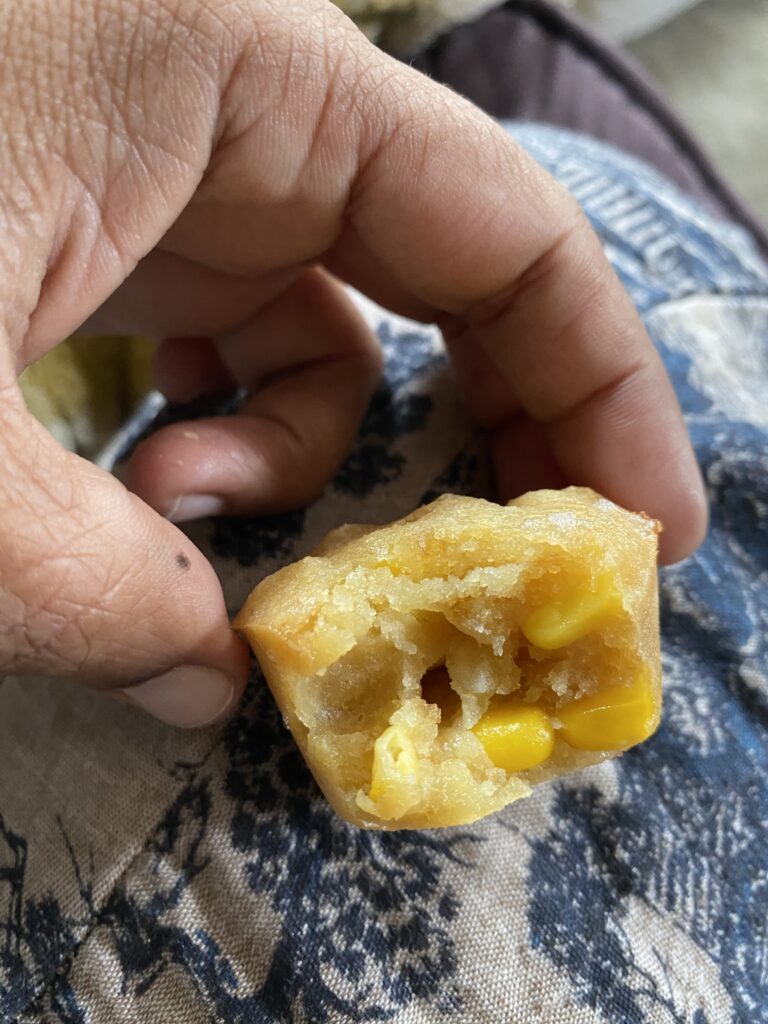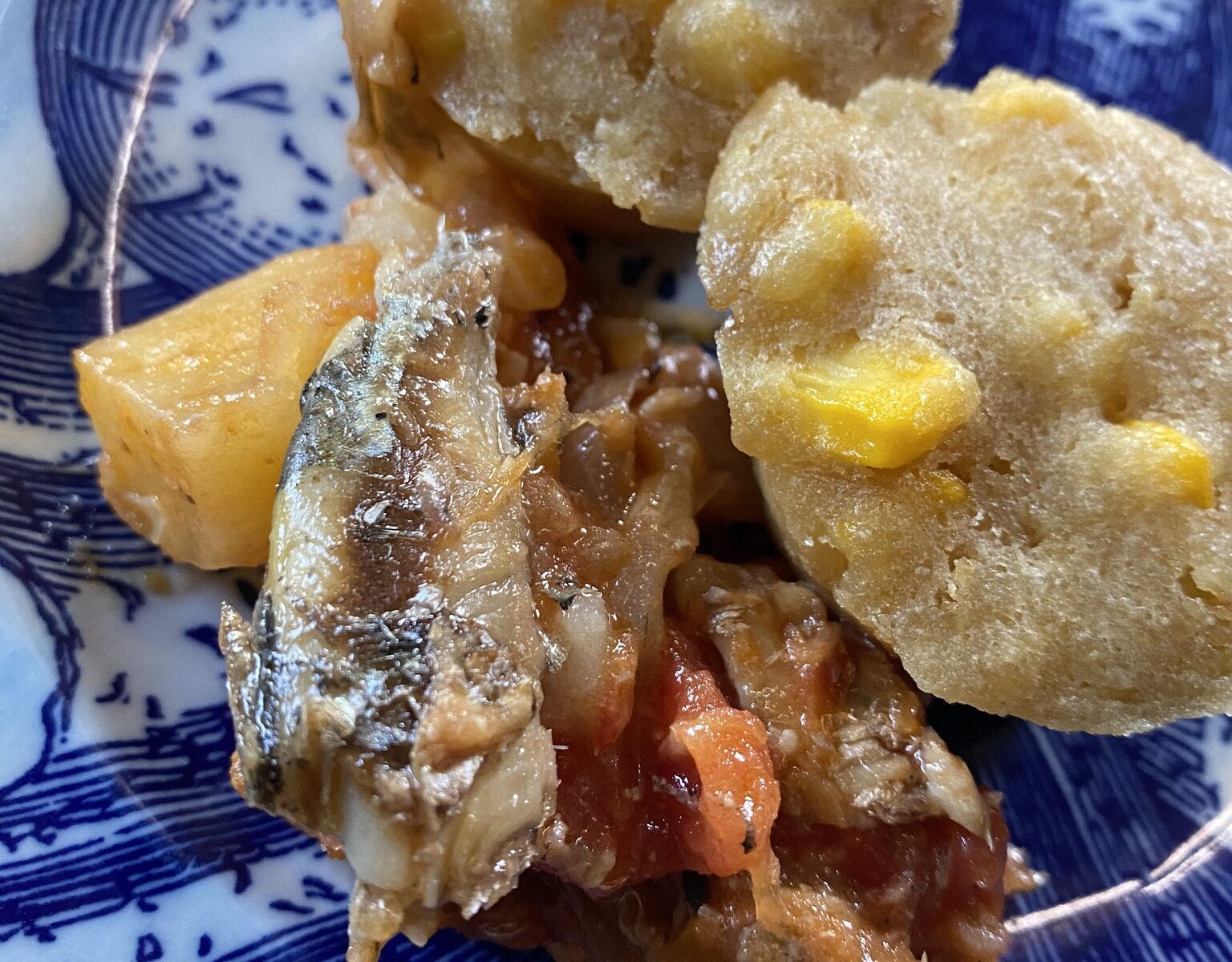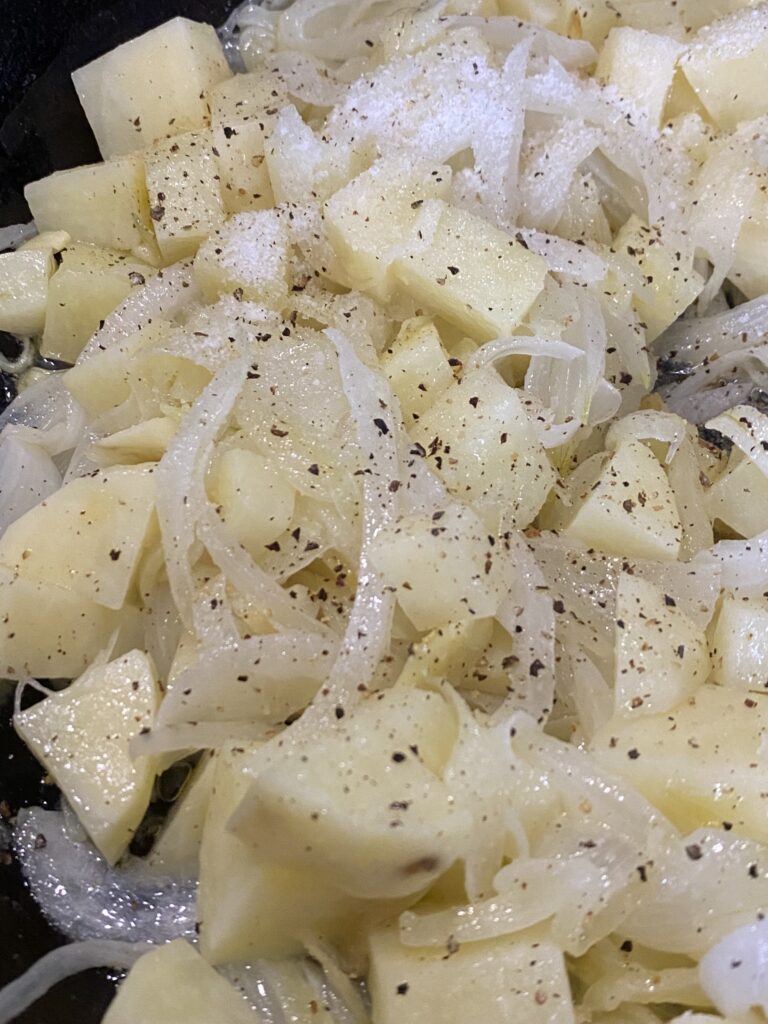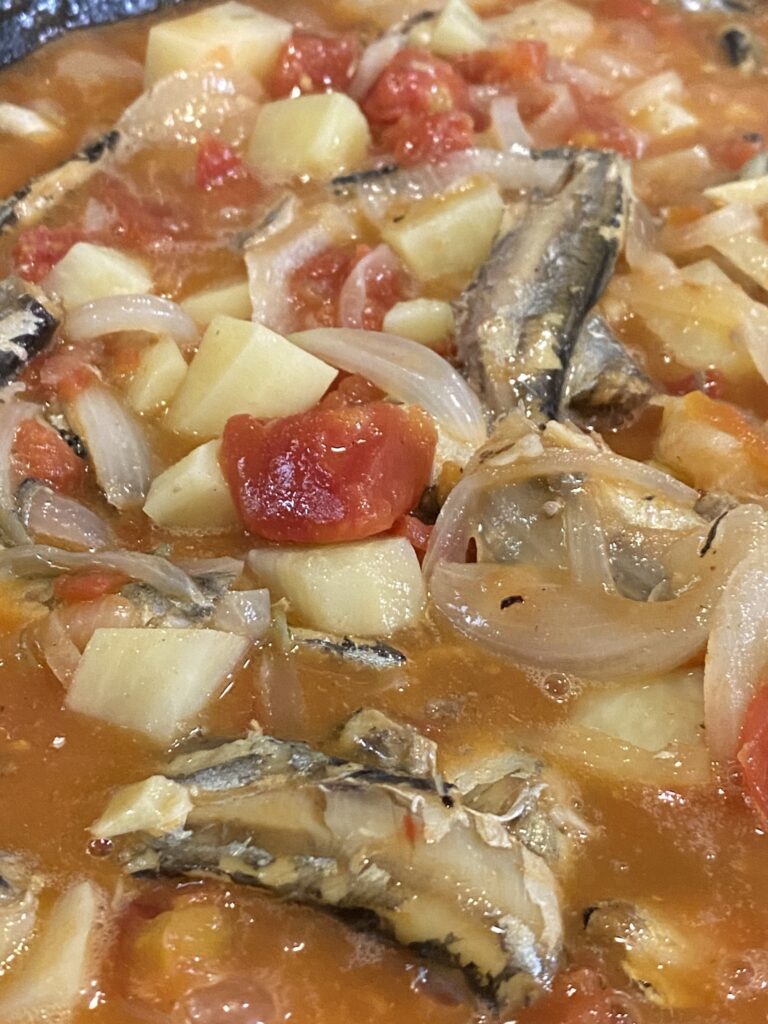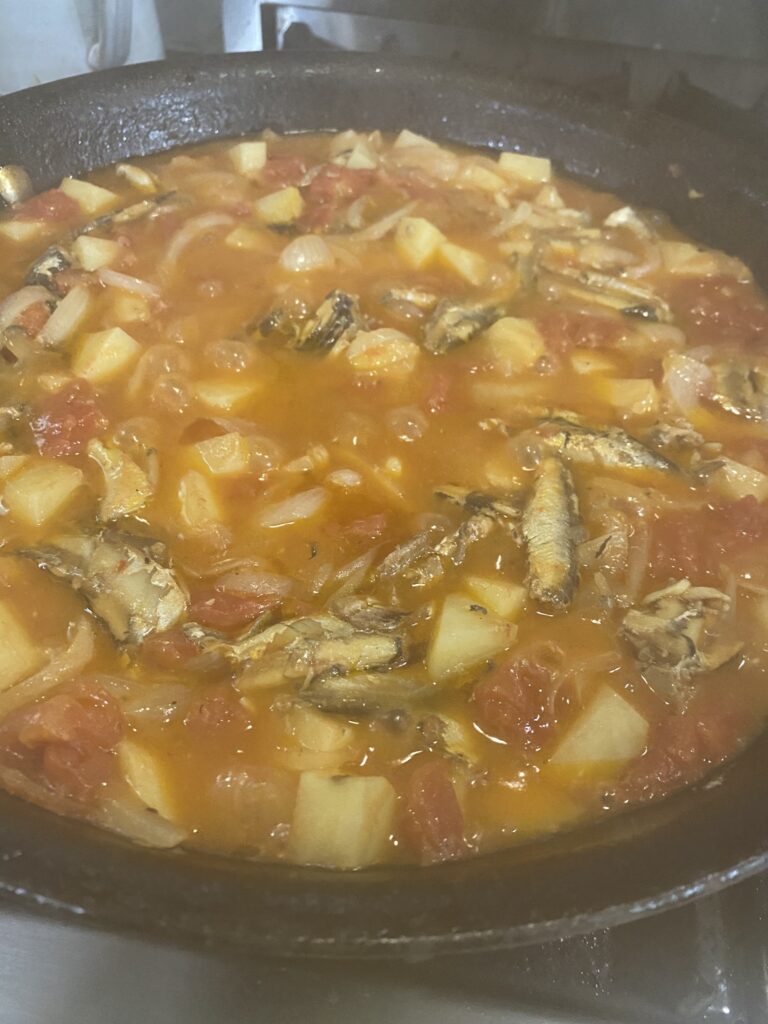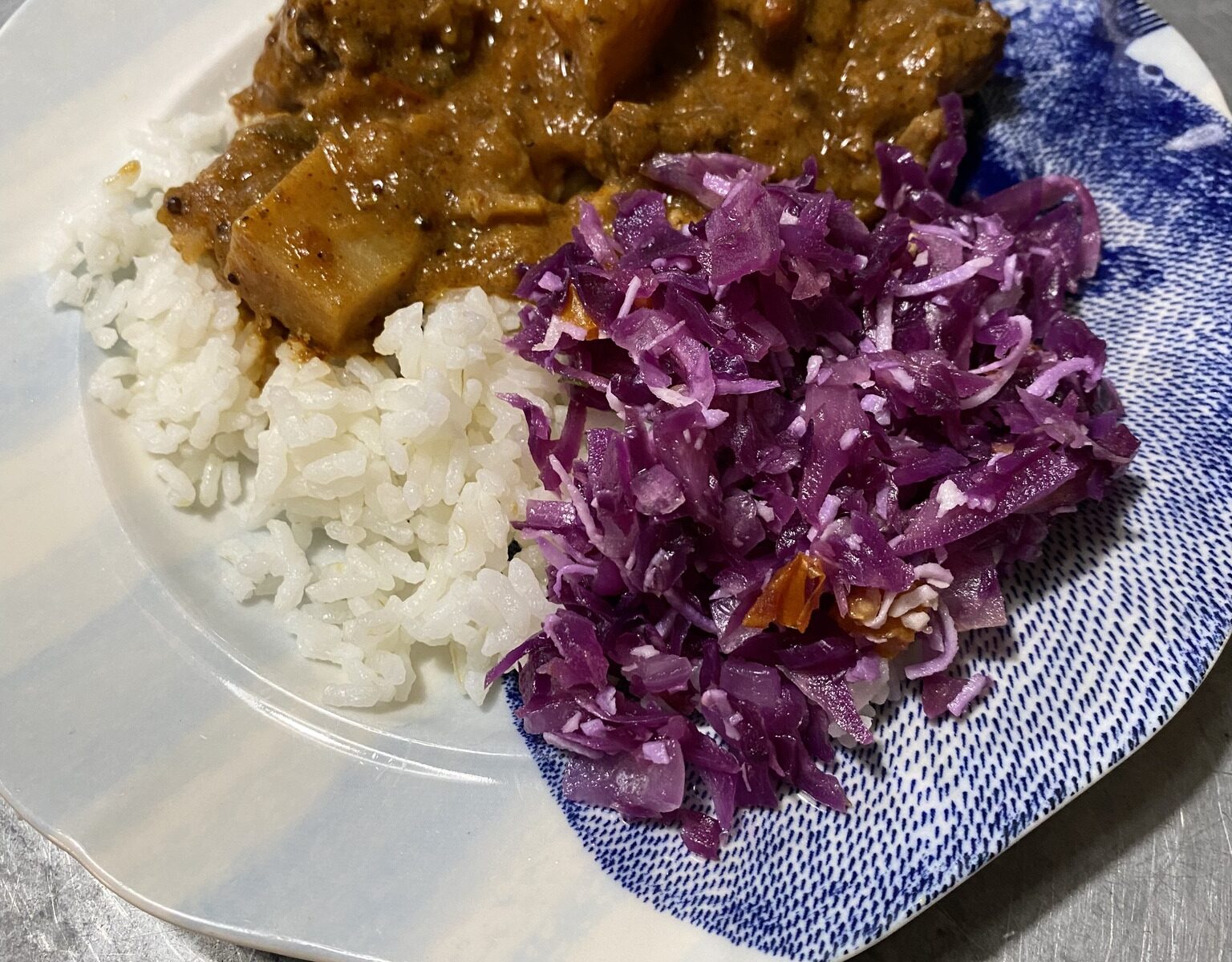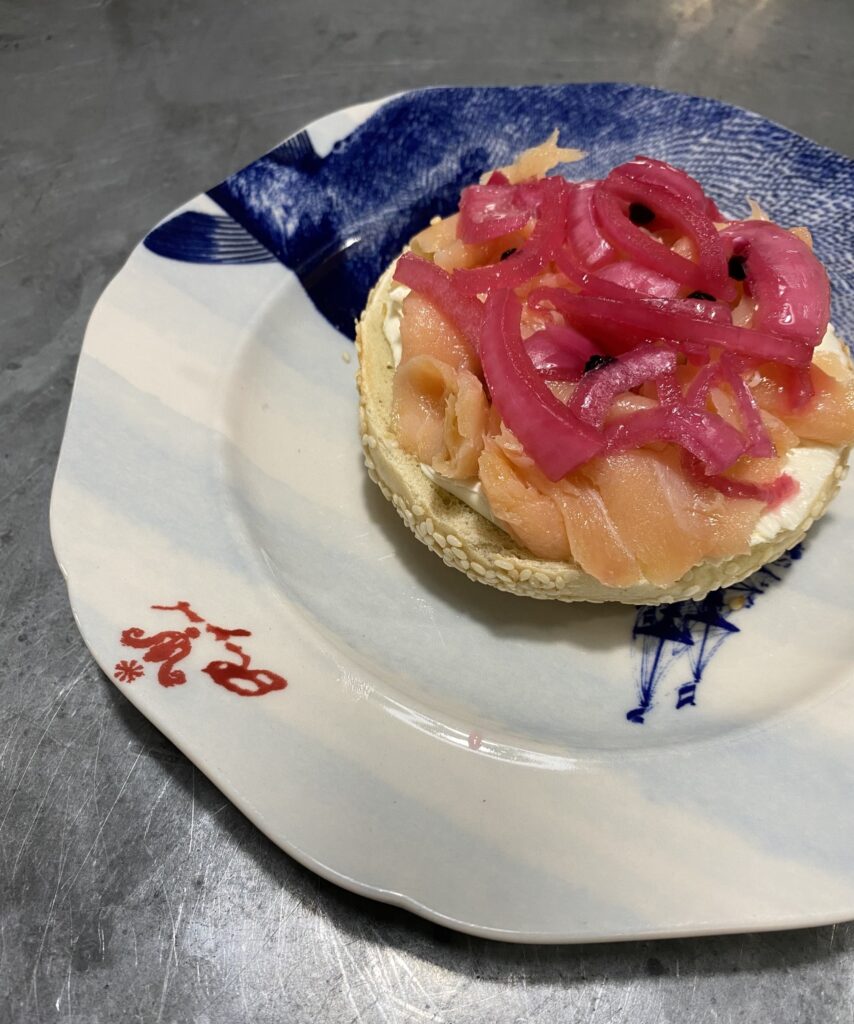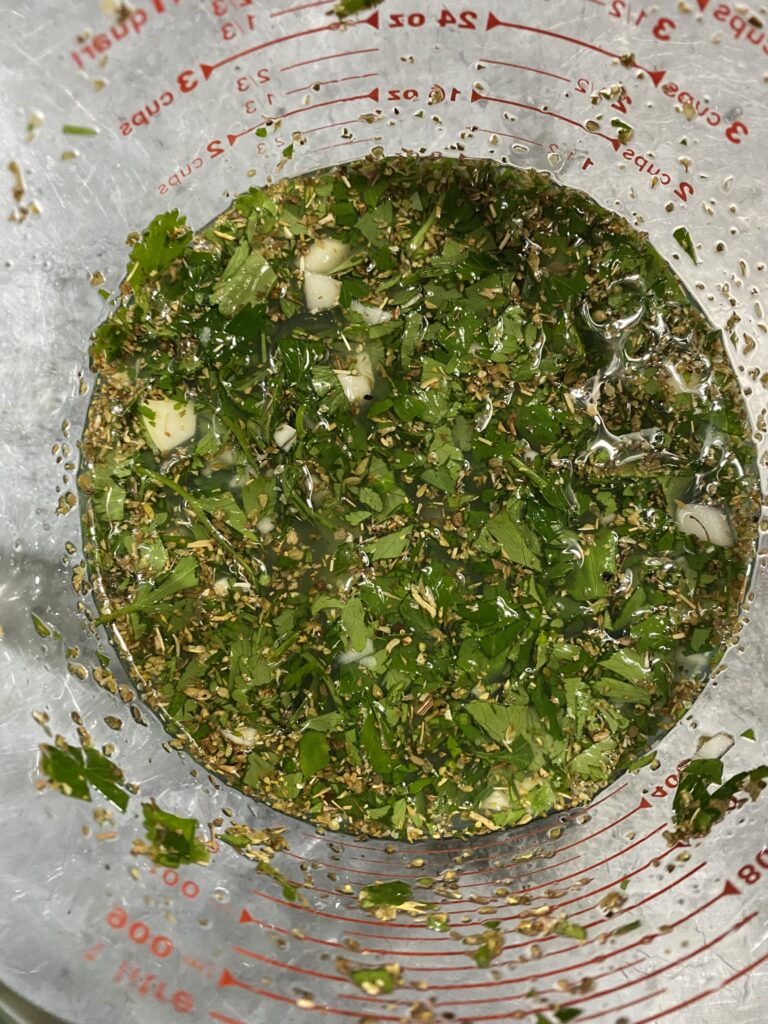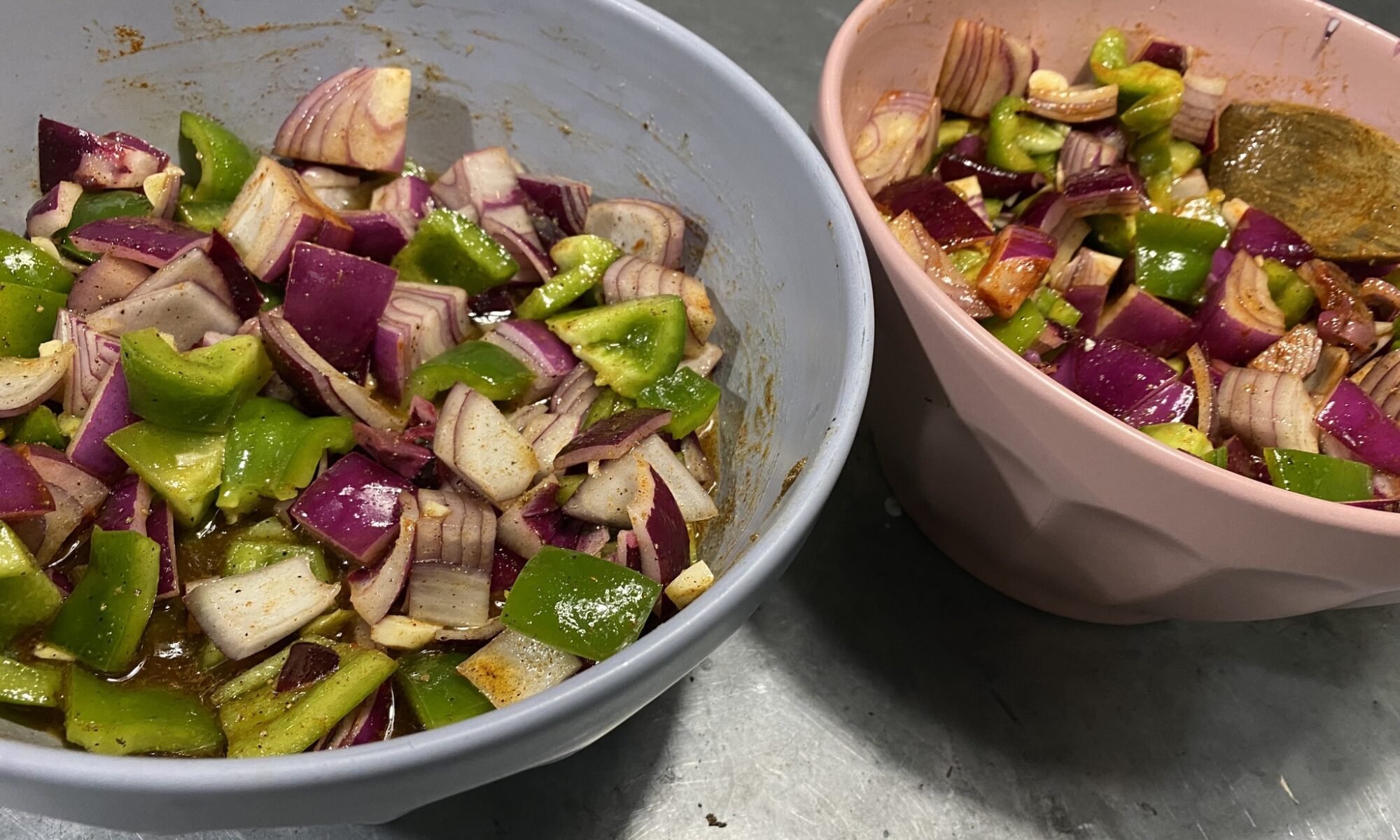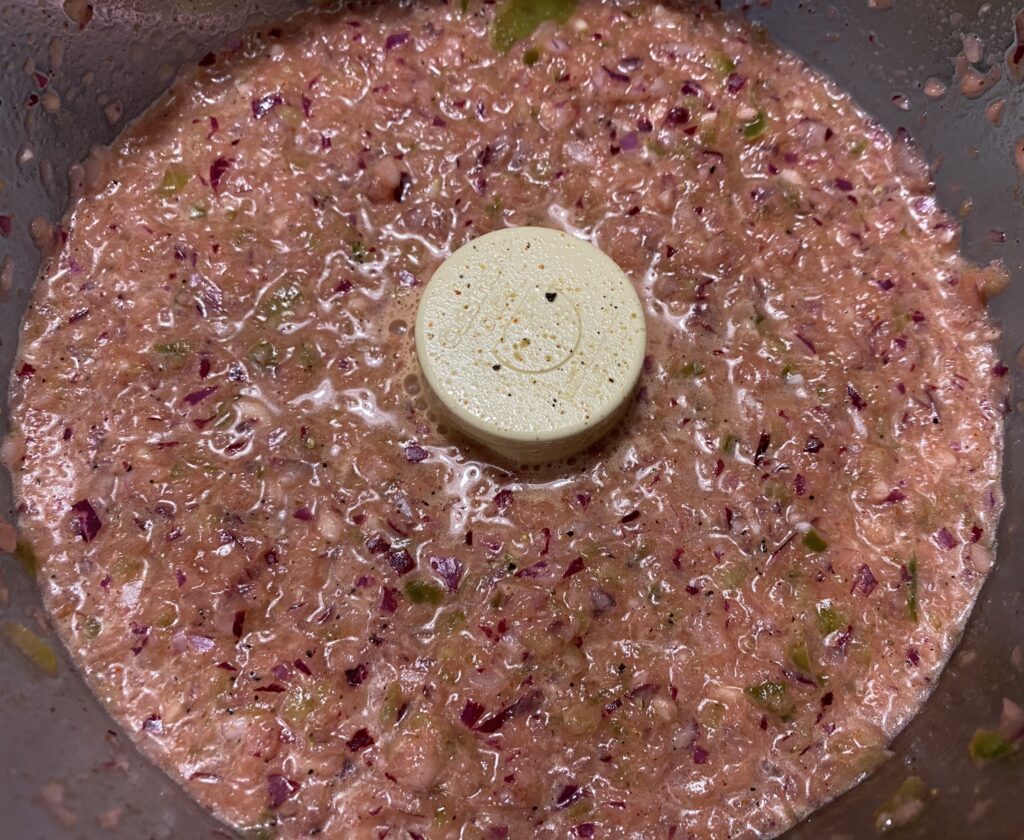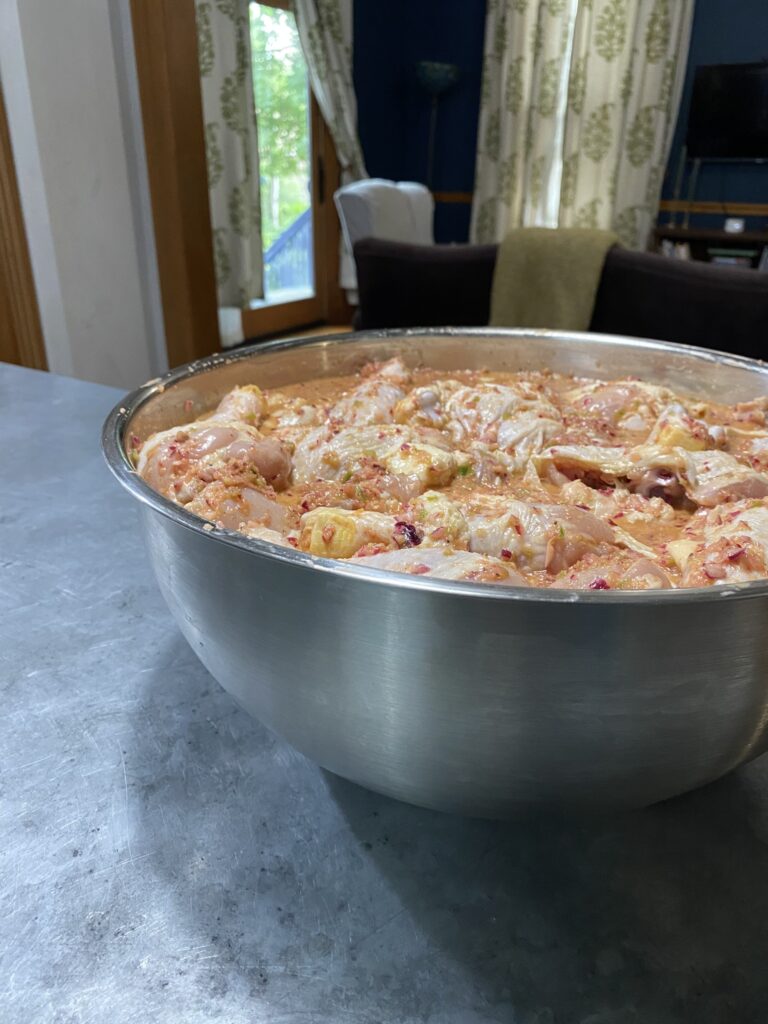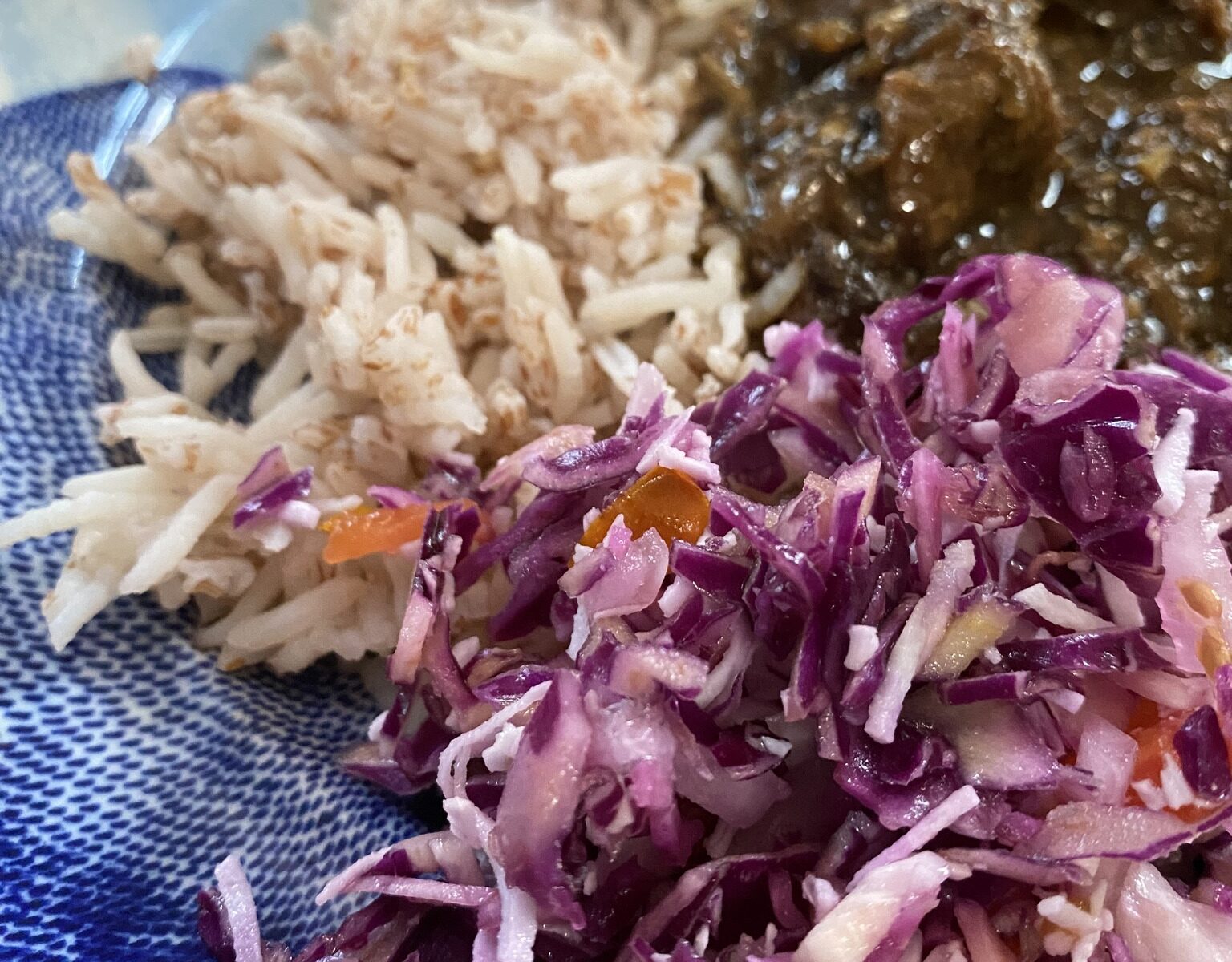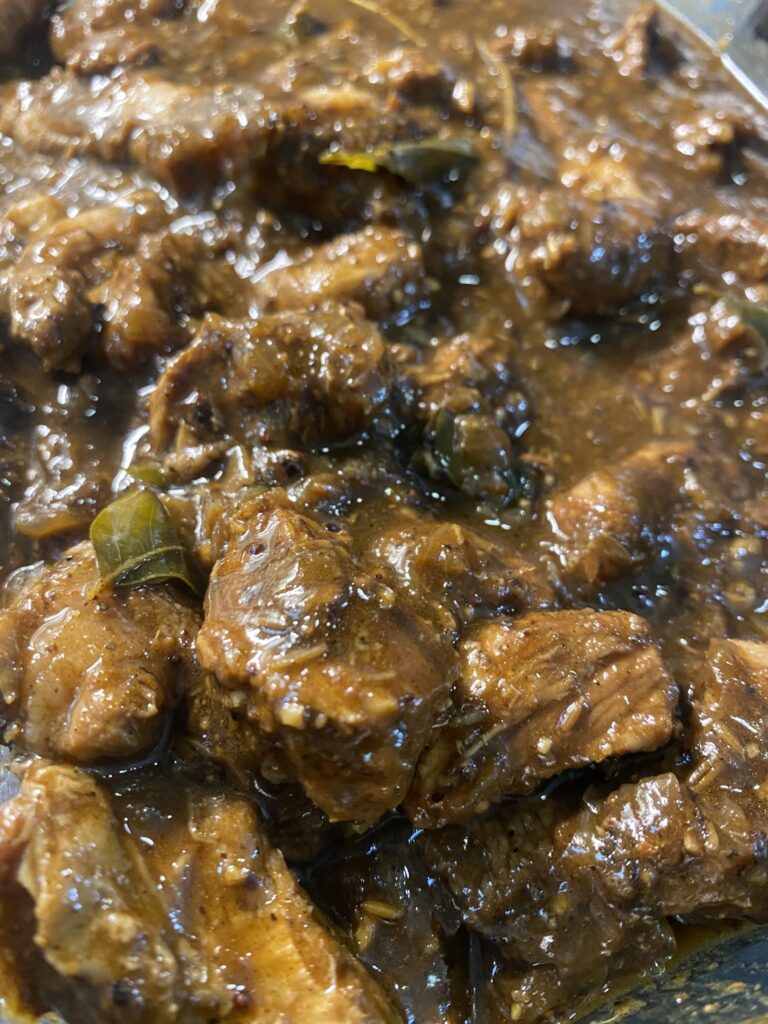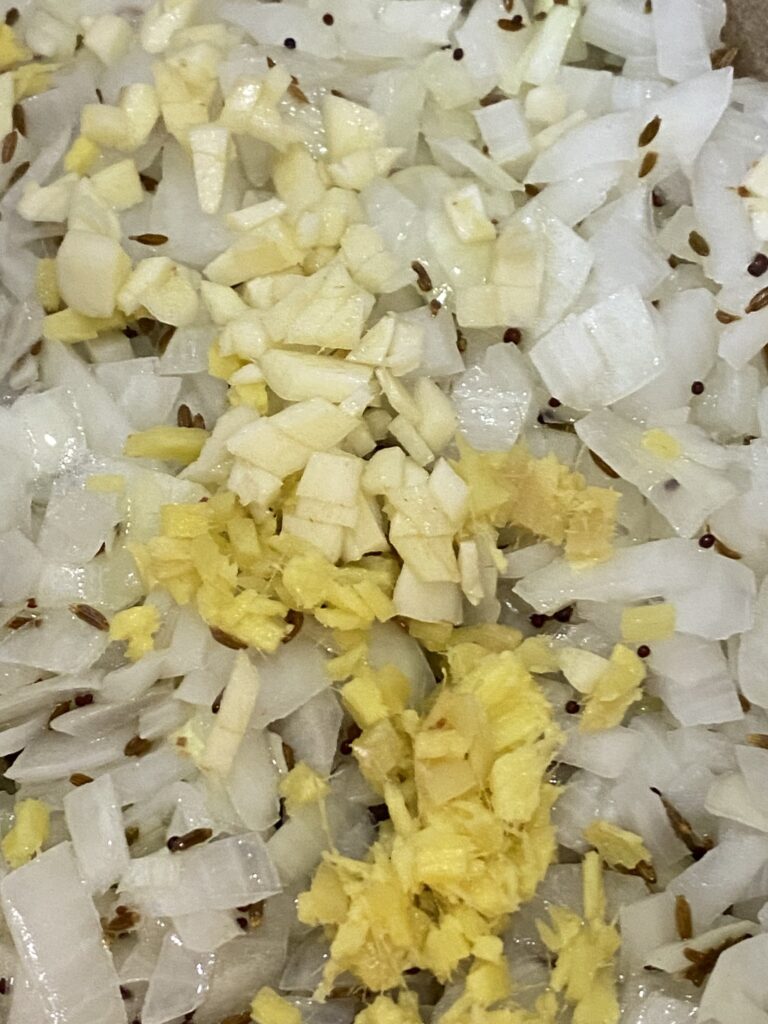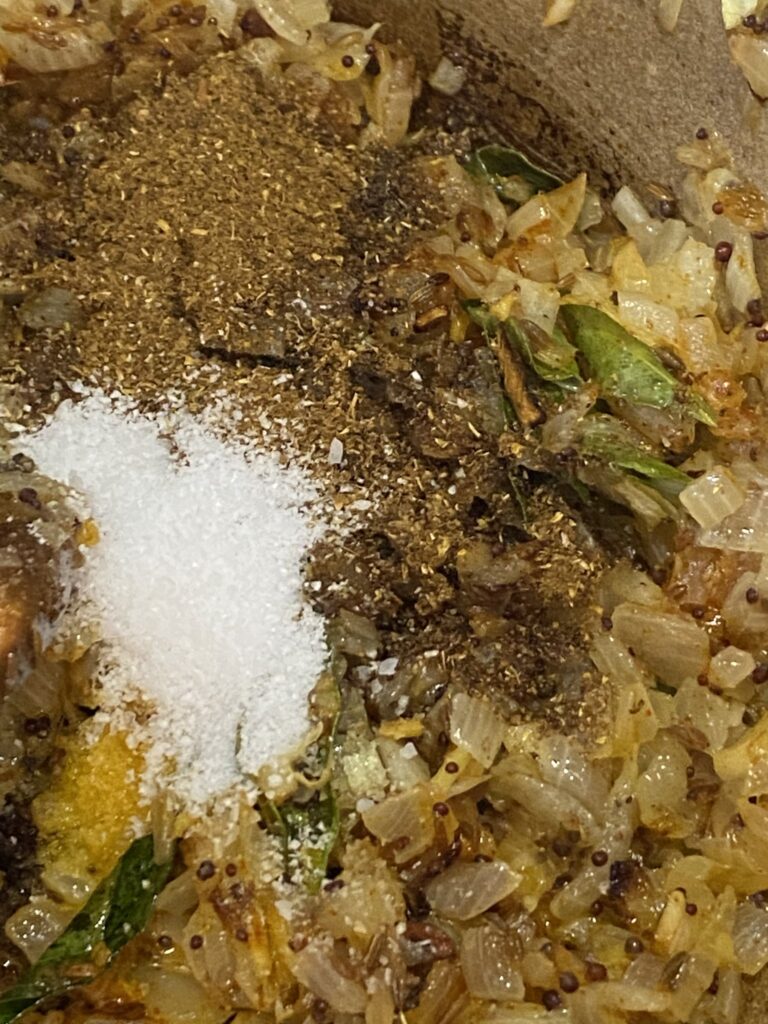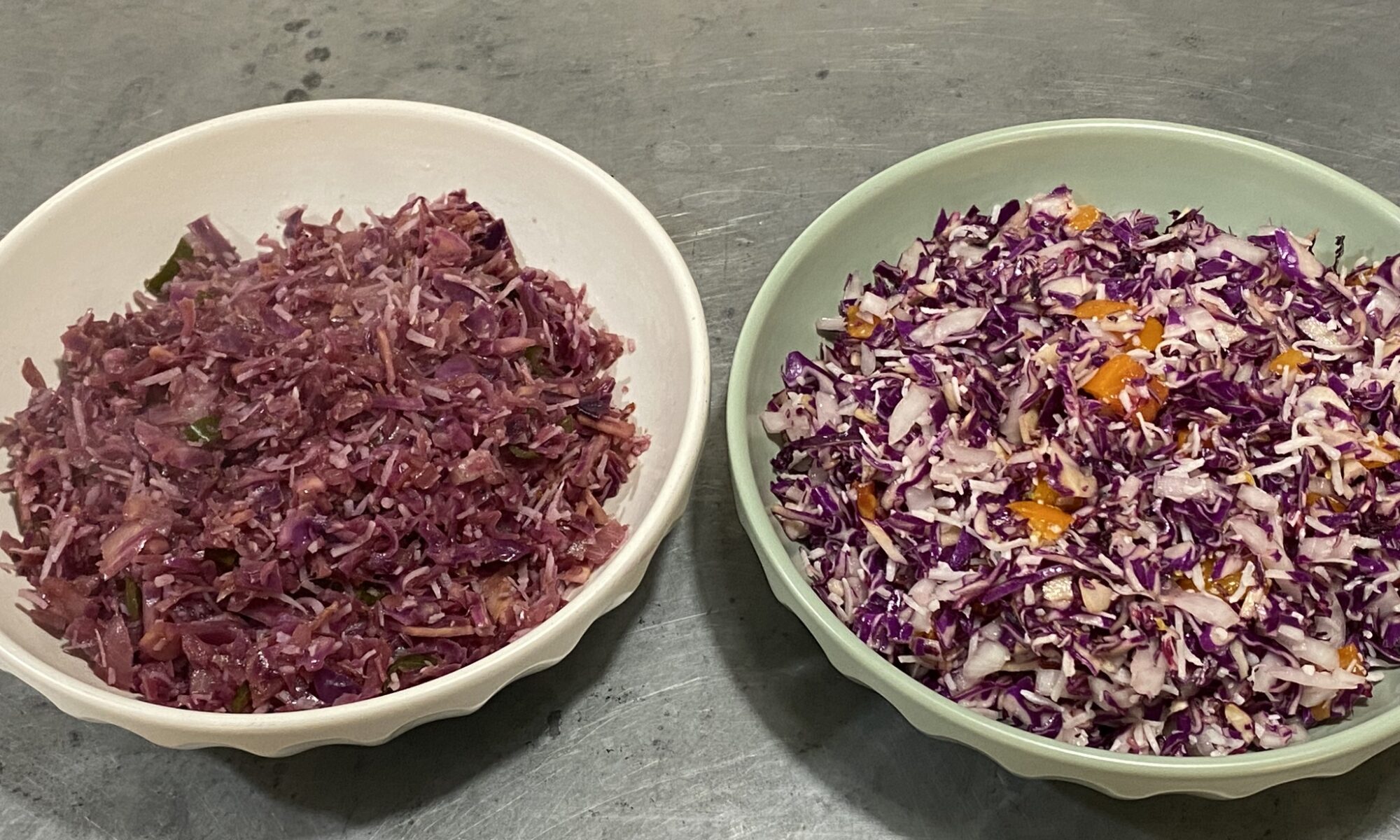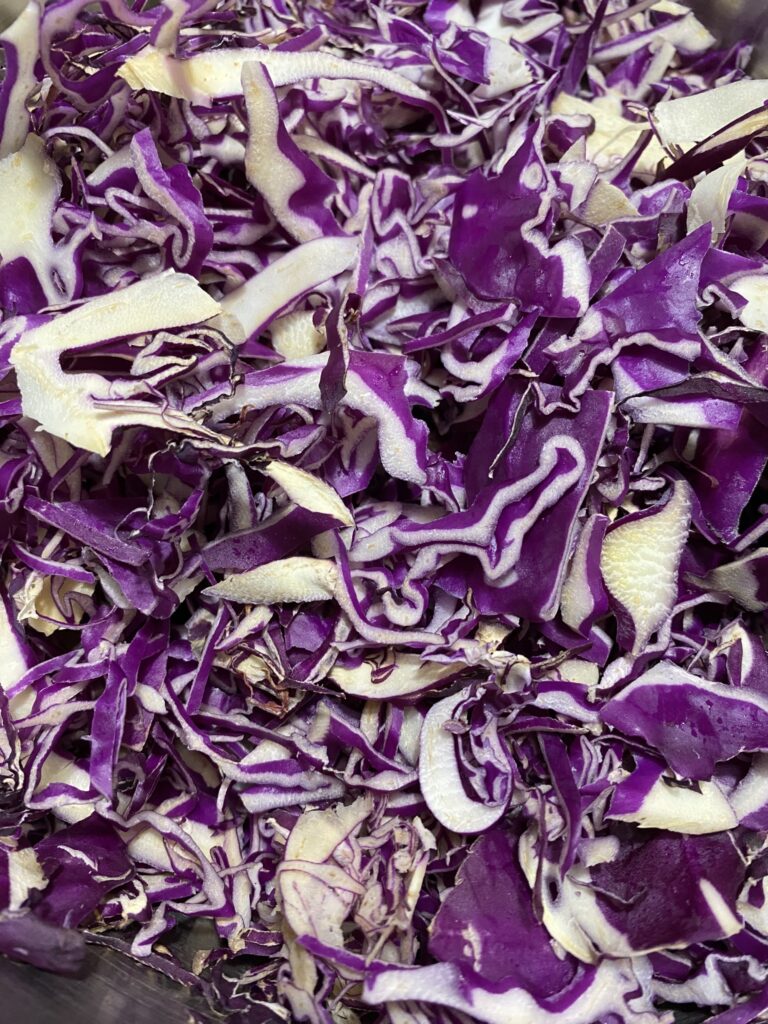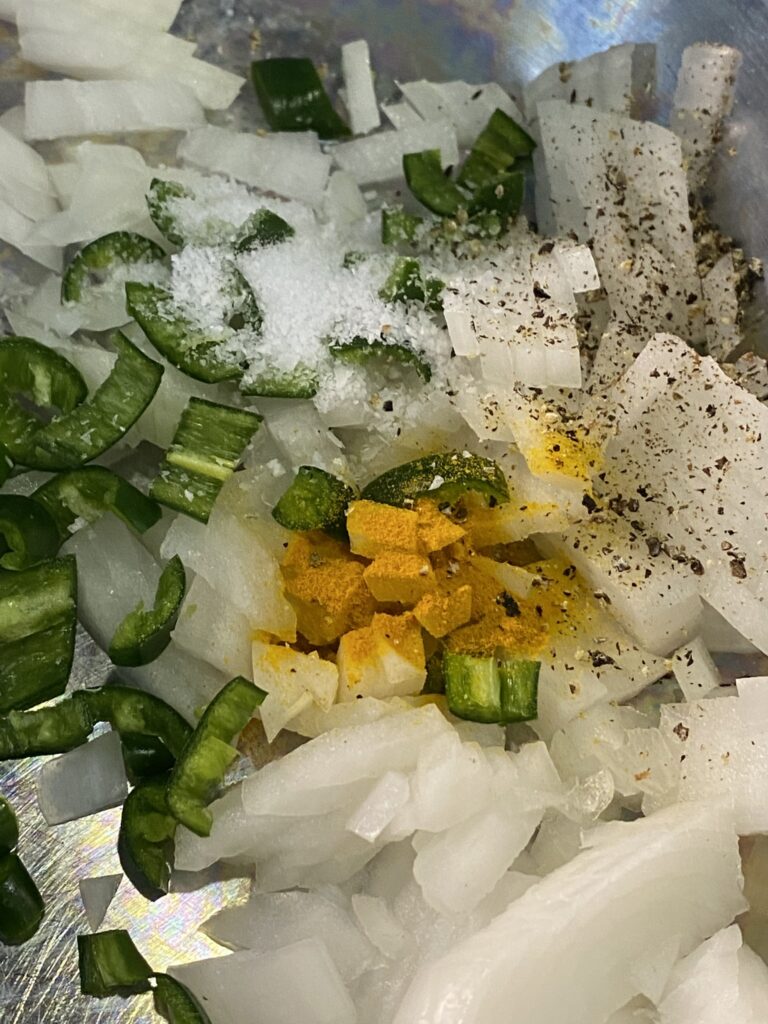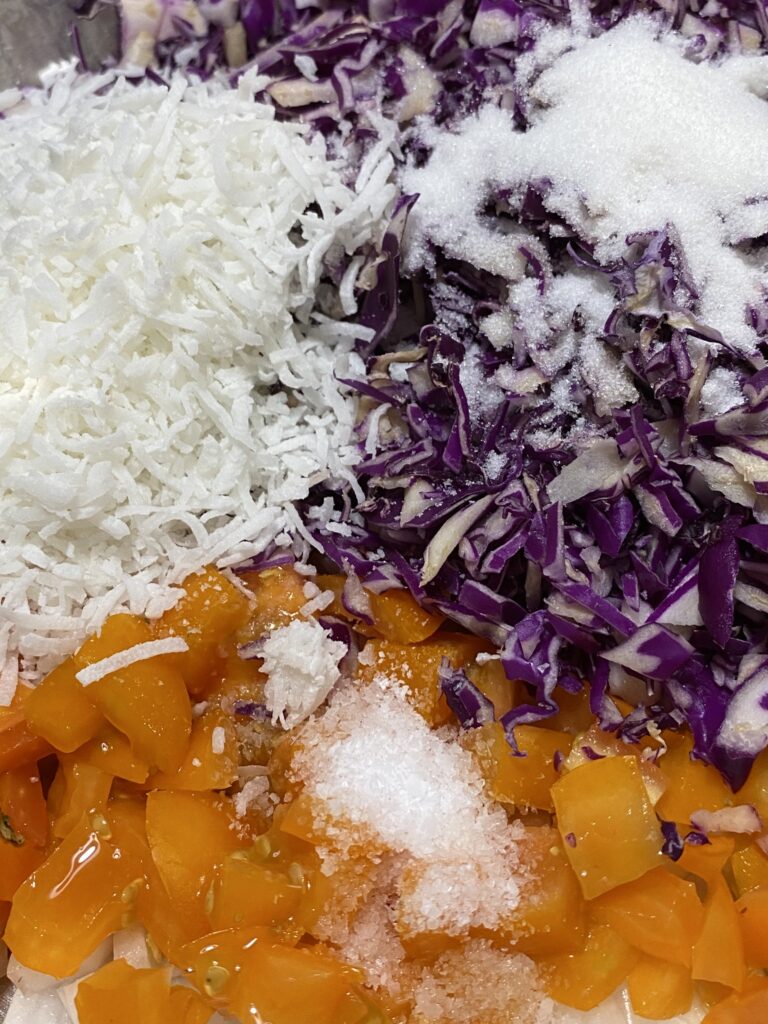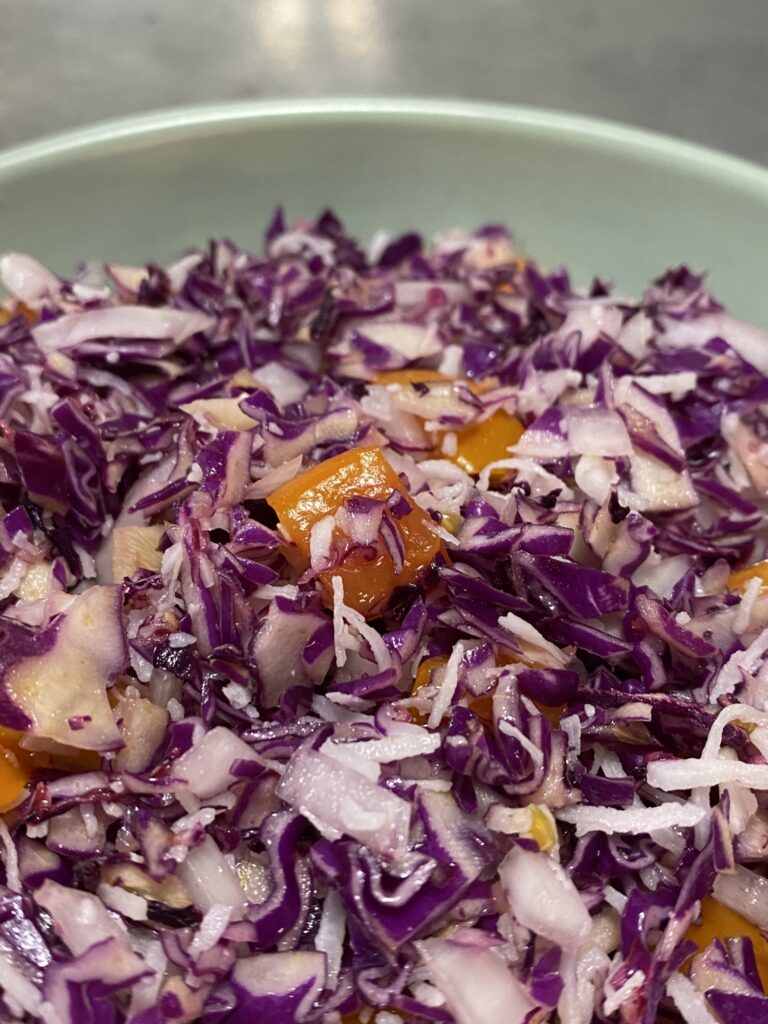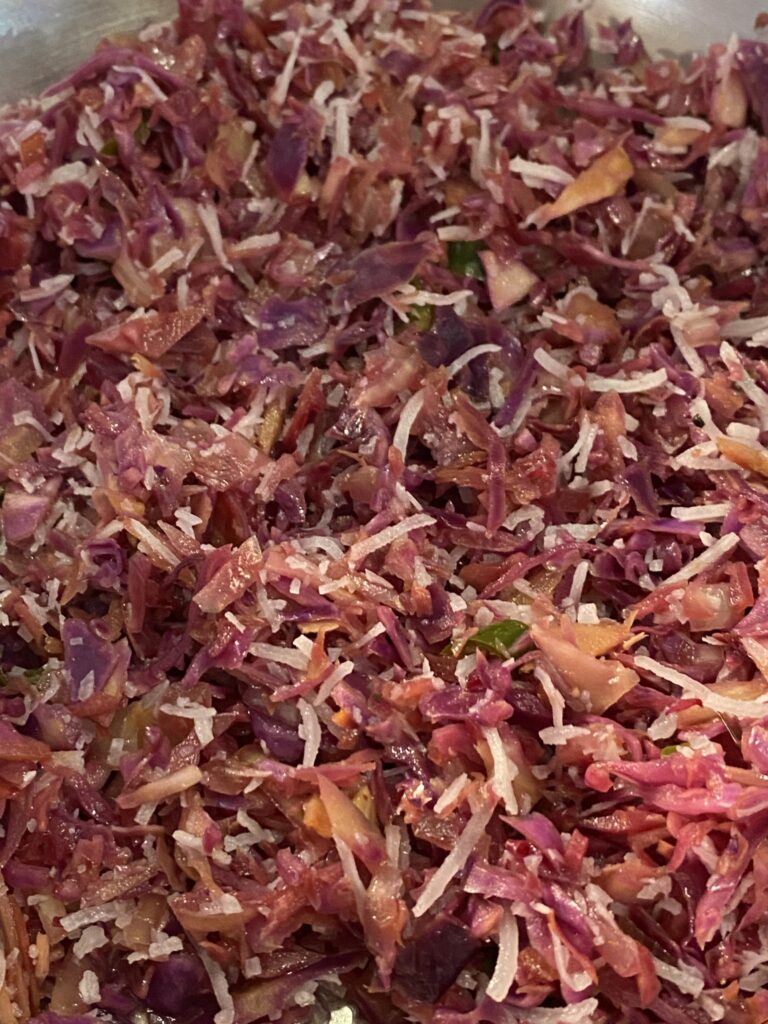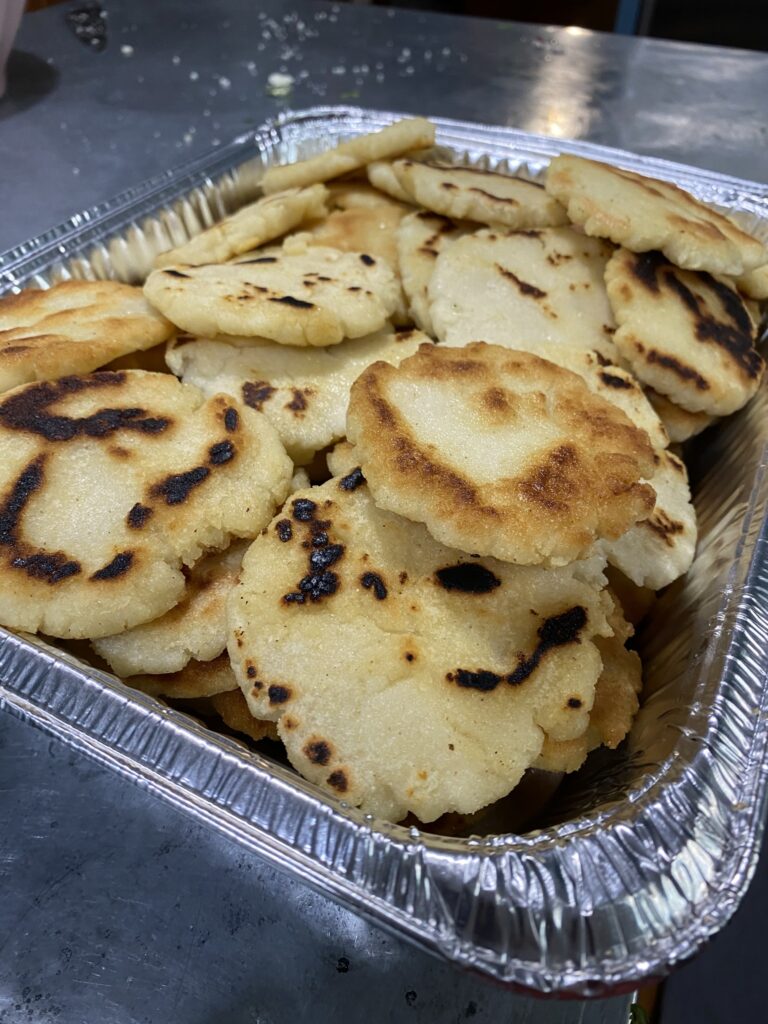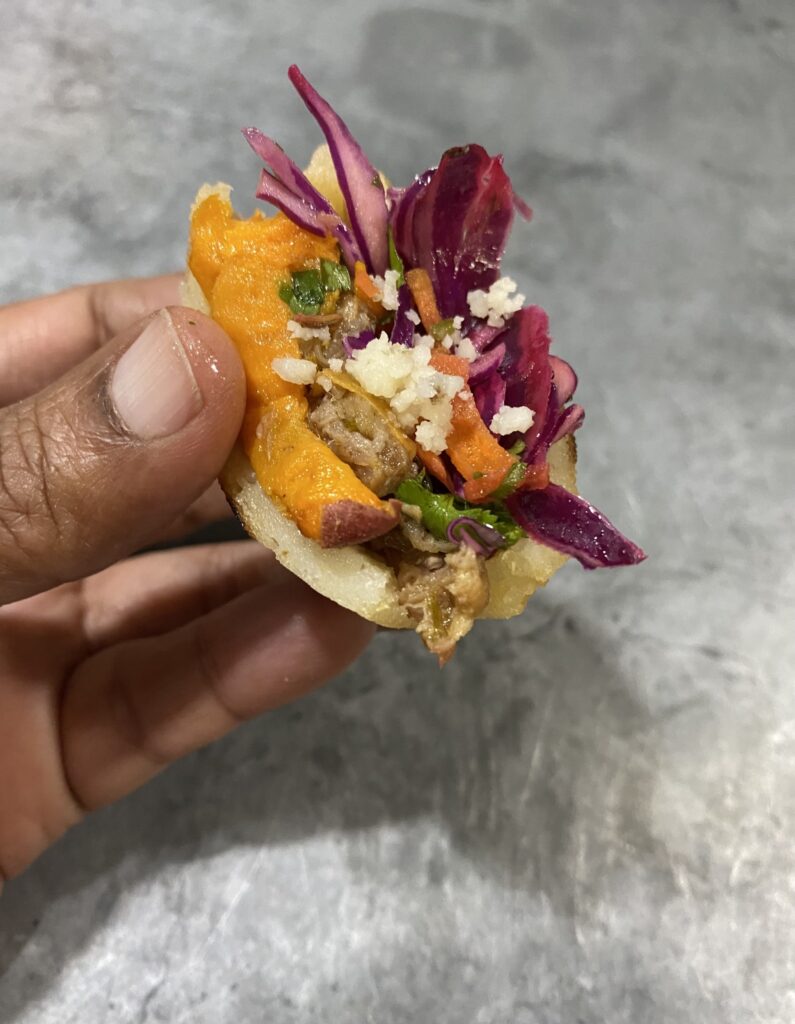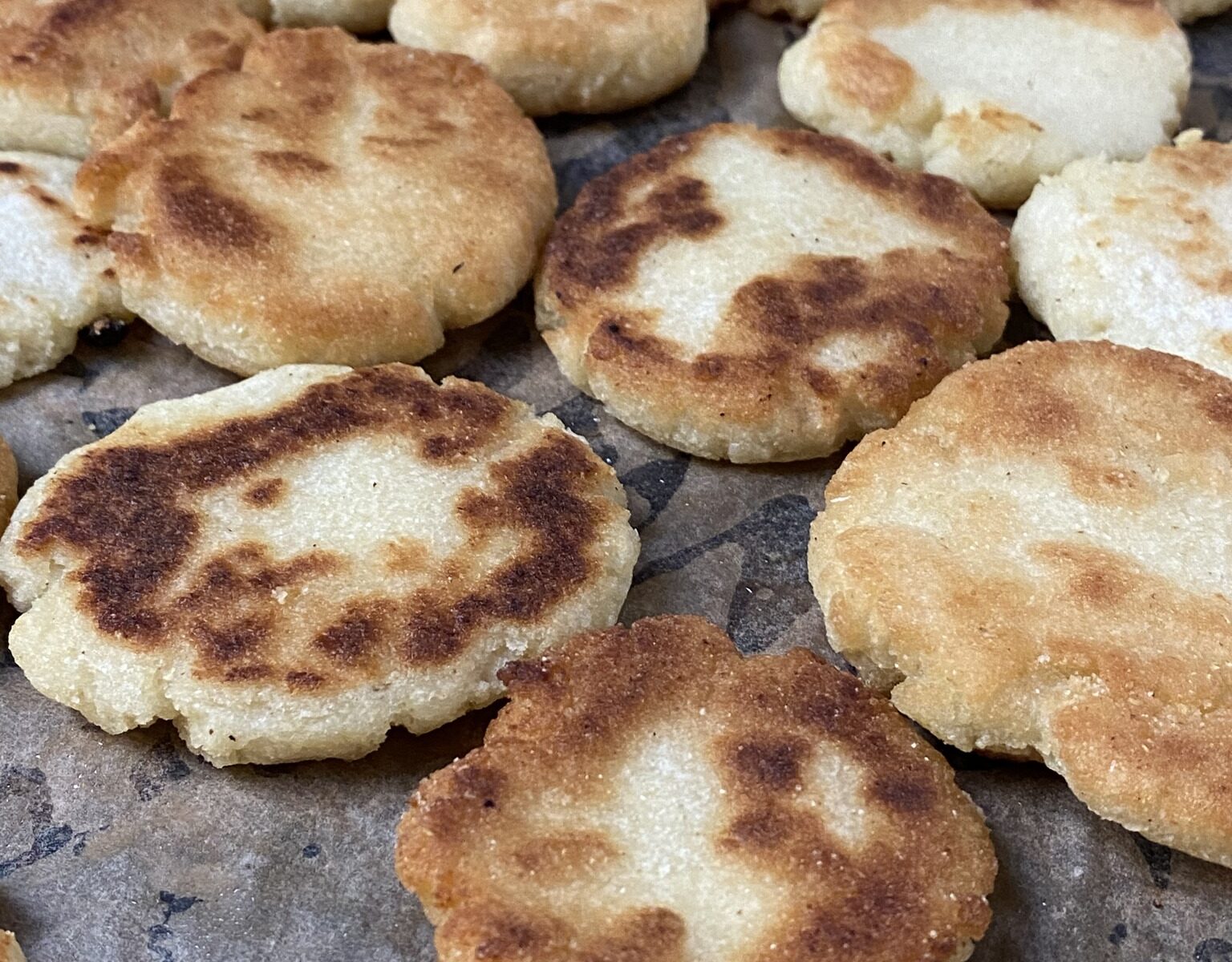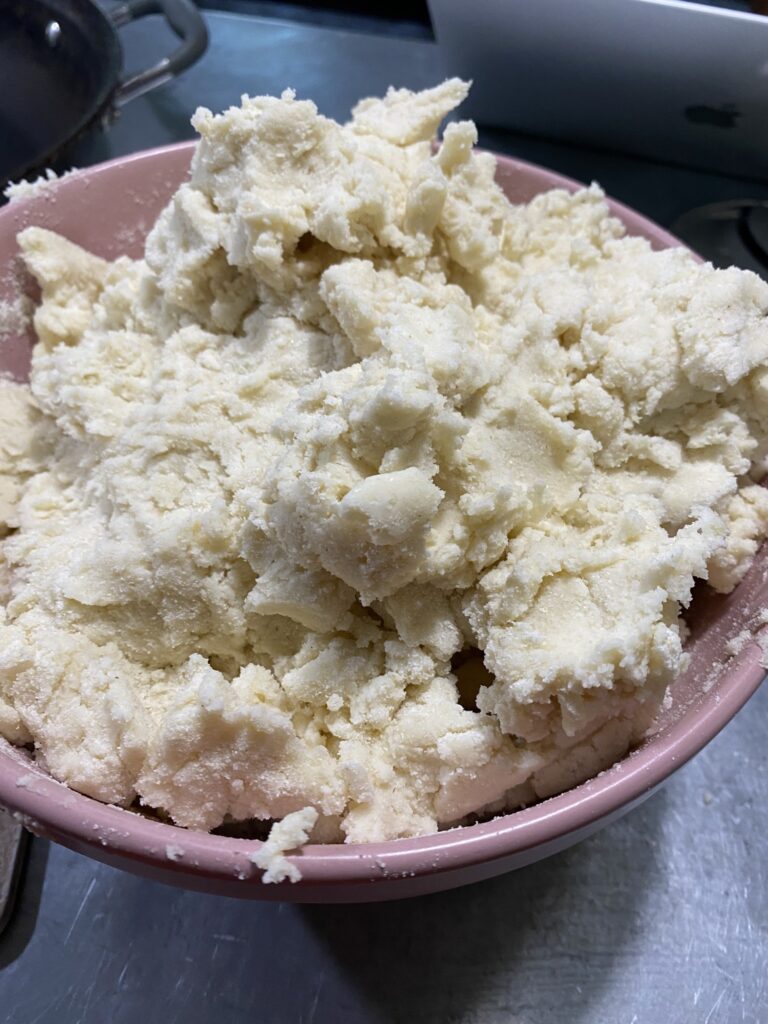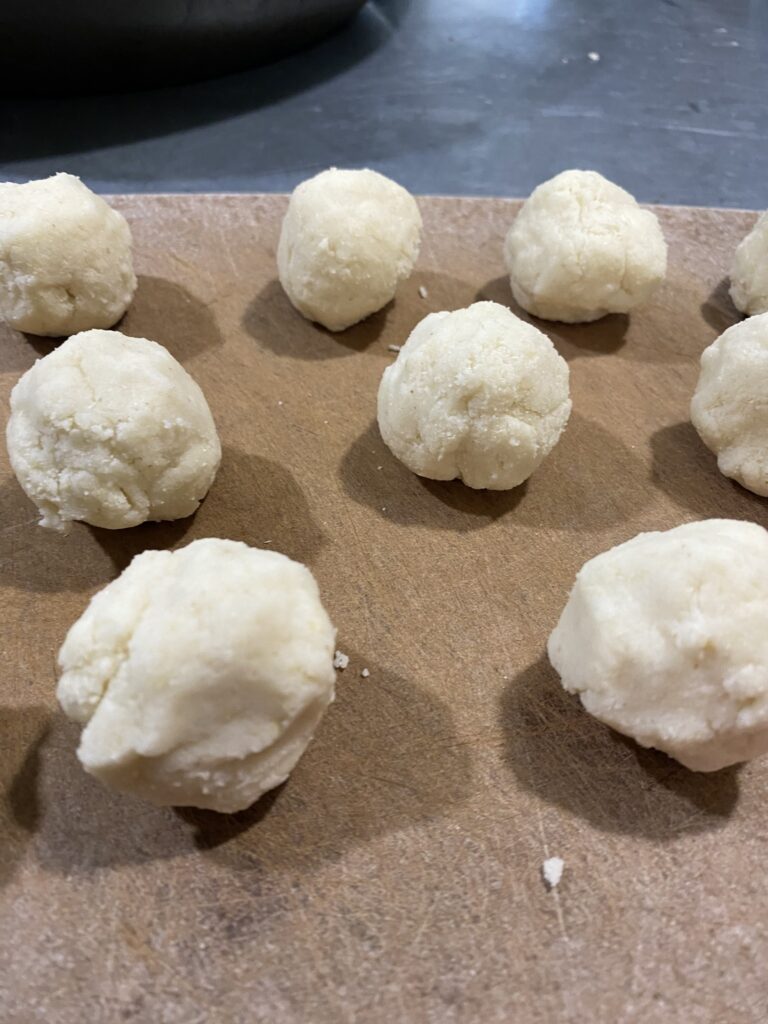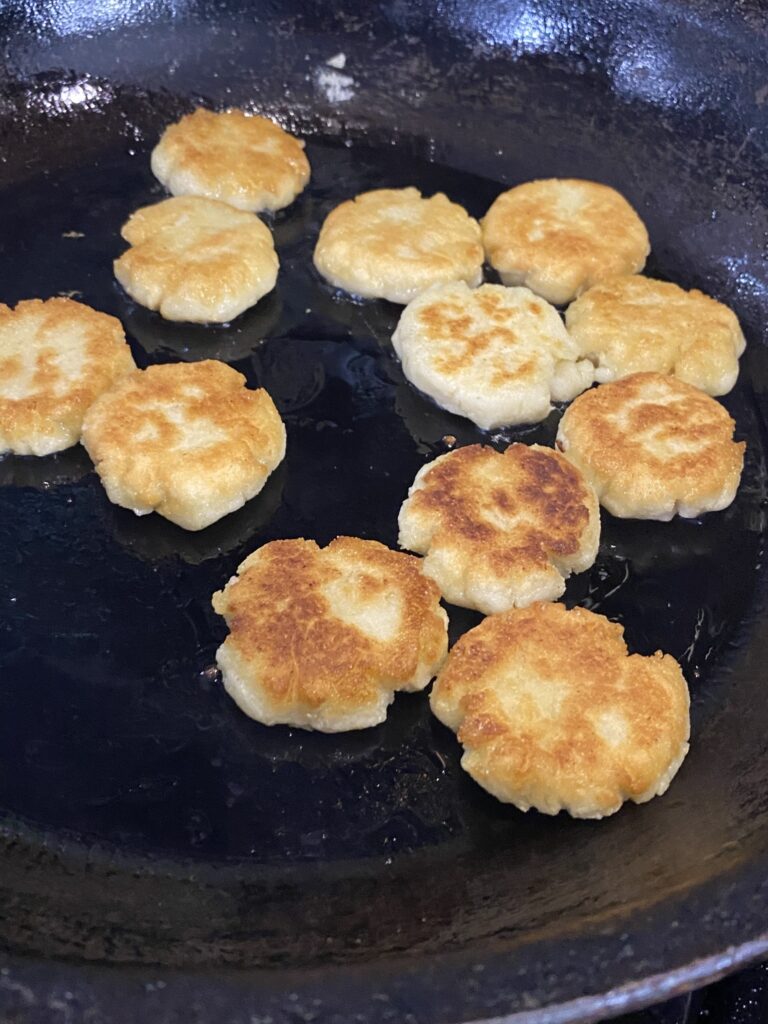Okay, so this isn’t EXACTLY a Venezuelan recipe? I was thinking that mostly volunteers have been dropping off dishes with chicken or beef or pork for the refugees (meat was requested on the sign-up sheet), and maybe they’d like some seafood for a change.
Not everyone likes seafood, of course, so I also made a chicken dish to be safe. But googling led me to believe that sardines are popular there, so I thought I’d try them.
I ended up combining two different recipes, so I’m not sure this is quite what you would get in Venezuela, but I did use their flavors, and the end result is DELICIOUS. I had a little bit to try with corn muffins, and it was SO GOOD — the flavors pair beautifully.
It’s similar to some Italian sardine dishes, I think. I don’t normally eat sardines that often, but I do love a Sri Lankan mackerel curry, and sardines are in the same ballpark, so I think I may try eating them more often. Also, did I mention, they’re really cheap? In this era of soaring grocery prices, worth noting.
The recipes I started with were:
– a Sardine Mojito (not the drink kind!) — https://steemit.com/…/recipe-mojito-sardine-step-by…
– Sopa de Pescado (fish soup)
https://thecookwaregeek.com/venezuelan-sopa-de-pescado…/
*****
Venezuelan-Style Sardine & Potato Stew
(serves 12 as a main dish, 24 as a side)
1/4 c. vegetable oil
3 onions, sliced
6 cloves garlic, chopped
3-4 potatoes, peeled and chopped
1 t. cumin powder
1/2 t. pepper
6 cans sardines packed in oil
2 14 oz. cans diced tomatoes
salt to taste
1. Heat oil in a large pan. Add onions and garlic, and stir until onions are translucent.
2. Add potatoes, cumin powder, and pepper; continue to stir until about half-way cooked (if you prefer, you can parboil the potatoes first in the microwave or on the stove, so they cook faster).
3. Add diced tomatoes, bring to a boil, cover, and lower head to medium. Cook another 10 minutes or so, until potatoes are cooked through and tomatoes are somewhat reduced.
4. Add 5 cans of sardines (reserving 1), and stir in GENTLY. Let simmer 10 minutes or so for the flavors to blend. (Add water if needed to keep from sticking.)
5. Turn into serving dish and top with last tin of sardines. Enjoy with arepas or corn muffins.
![]()
